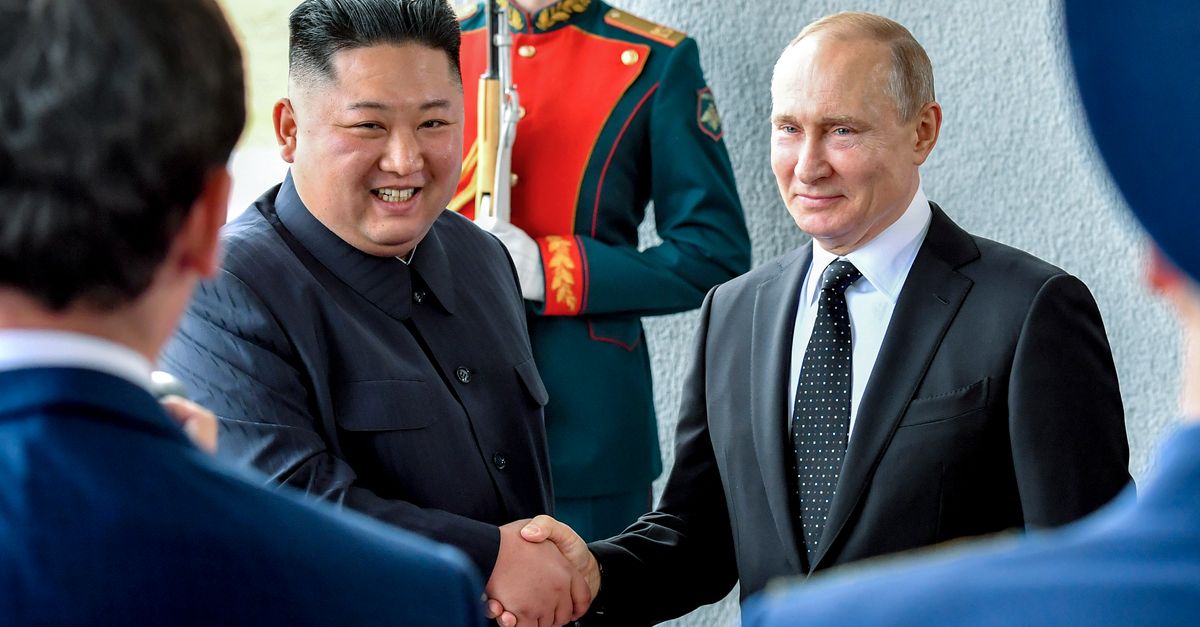After a year and a half of battling in Ukraine, Russia finds itself in need of ammunition to sustain a potentially long and exhausting war. To meet this demand, Moscow is exploring the possibility of acquiring supplies from an unlikely source — North Korea. With its large arsenal of artillery shells and rockets, North Korea has the potential to significantly bolster Russia’s military capabilities. In the coming days, North Korean leader Kim Jong Un is expected to visit Russia to finalize a deal on the transfer of munitions with President Vladimir Putin. This marks a notable reversal from the 1950-53 Korean War when the Soviet Union provided weapons and ammunition to the communist North.
Alexander Gabuev, the head of the Carnegie Russia Eurasia Center, states that Russian Defense Minister Sergei Shoigu recently visited North Korea specifically to discuss the potential acquisition of artillery shells. The meeting between Putin and Kim Jong Un is likely to focus on this matter. While Kremlin spokesman Dmitry Peskov declined to comment on a possible deal, he emphasized the importance of maintaining relations with North Korea as a neighboring country.
Though the majority of North Korea’s military arsenals are outdated, their sheer size presents a valuable opportunity for the Russian military in the largest land conflict in Europe since World War II. Hong Min, an analyst at Seoul’s Korea Institute for National Unification, suggests that Russia may establish North Korea as a “rear base” to support its war efforts by establishing a significant supply line for munitions.
In November, the U.S. reported that North Korea had sold munitions to a Russian private military contractor called Wagner. Both Russian and North Korean officials deny these claims, stating that no weapons or munitions have been shipped or planned for shipment between the two countries. Nevertheless, U.S. officials view Russia’s pursuit of North Korean weapons as a reflection of its own military challenges. Jake Sullivan, White House national security adviser, highlights concerns over the quality of North Korean weapons and questions why Russia is turning to a country like North Korea to strengthen its defense capacity.
Jon Finer, U.S. President Joe Biden’s chief deputy national security adviser, acknowledges that obtaining weapons from Pyongyang may be Moscow’s only viable option as it seeks to sustain its war efforts. While the U.S. has warned against arms shipments between North Korea and Russia due to a U.N. embargo, observers note that there are limited options for the U.S. to respond. Additionally, they raise concerns over the potential for Russia to share advanced technology with North Korea in exchange for arms supplies, posing a significant threat to regional security.
In addition to exploring North Korean munitions, Russia has relied on drones imported from Iran to support its war efforts. These drones, such as the Shahed exploding drones, have played a significant role in targeting Ukraine’s infrastructure. Ukrainian air defenses have improved their ability to engage these drones, but they continue to cause significant damage. Russia reportedly obtained a production license from Iran, enabling domestic assembly of the drones at a newly built factory. Russian arms manufacturers have also developed new products, including satellite-guided gliding bombs and other precision weapons, to counter Ukraine’s advances.
While Russia has faced setbacks early in the war due to Ukraine’s effective use of drones, its military has since adapted by utilizing mass-produced exploding drones like the Lancet. The Russian military has also employed gliding aerial bombs, which have transformed old Soviet-made bombs into highly efficient “smart” weapons with a satellite navigation module. These technologies have allowed Russia to increase its attacks on Ukrainian forces without risking its own warplanes. The Vikhr anti-tank missile, used by Russian helicopter gunships, has also been instrumental in targeting Ukrainian armor.
To compensate for equipment losses, Russian manufacturers have increased the production of tanks and other weapons. The Russian military has also tapped into its storage bases of armored vehicles dating back to the Cold War, upgrading some with protective shields and other enhancements. Dmitry Medvedev, the deputy head of Russia’s Security Council, has announced plans to produce 1,500 battle tanks in 2023.
In essence, Russia is seeking external sources to replenish its ammunition stockpile in order to sustain its war efforts in Ukraine. The potential deal with North Korea and the use of Iranian drones and other weapons reflect Russia’s strategy to bolster its military capabilities in a complex and ongoing conflict.
Denial of responsibility! Vigour Times is an automatic aggregator of Global media. In each content, the hyperlink to the primary source is specified. All trademarks belong to their rightful owners, and all materials to their authors. For any complaint, please reach us at – [email protected]. We will take necessary action within 24 hours.


